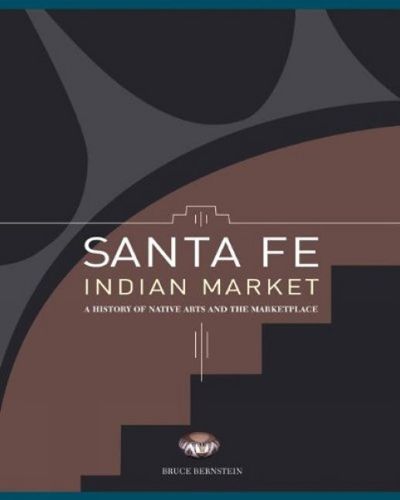Readings Newsletter
Become a Readings Member to make your shopping experience even easier.
Sign in or sign up for free!
You’re not far away from qualifying for FREE standard shipping within Australia
You’ve qualified for FREE standard shipping within Australia
The cart is loading…






Each August, one hundred thousand people attend Indian Market in Santa Fe, New Mexico, the nation’s largest and most anticipated Native arts event. One thousand artists, representing 160 tribes, nations, and villages from the United States and Canada, proudly display and sell their works of art, ranging from pottery and basketry to contemporary paintings and sculptures. The history of Indian Market as related in this new publication is the story of Indian cultural arts in the twentieth century beginning with Edgar L. Hewett and the founding of the Museum of New Mexico in Santa Fe in 1909. At the turn of the last century, the notion of Indian art as art in its own right and not ethnography was a foreign concept. With the arrival of the railroad and tourism in New Mexico, two thousand years of utilitarian Pueblo pottery tradition gave way to a curio trade intended for visitors to the area. The curators and archaeologists at the Museum of New Mexico began to collect prehistoric and historic pottery and encouraged potters to make pottery modeled on traditional ideas thought to represent authentic culture. Maria and Julian Martinez countered the idea that art was a matter of studying the past when in 1922, at the first Indian Fair , they introduced their revolutionary Black-on-black pottery. Bruce Bernstein links these early developments to Indian Market’s ninety-year relationship with Native arts, cultural movements, historical events, and the ever-evolving creativity of Native artists to shape their market.
$9.00 standard shipping within Australia
FREE standard shipping within Australia for orders over $100.00
Express & International shipping calculated at checkout
Each August, one hundred thousand people attend Indian Market in Santa Fe, New Mexico, the nation’s largest and most anticipated Native arts event. One thousand artists, representing 160 tribes, nations, and villages from the United States and Canada, proudly display and sell their works of art, ranging from pottery and basketry to contemporary paintings and sculptures. The history of Indian Market as related in this new publication is the story of Indian cultural arts in the twentieth century beginning with Edgar L. Hewett and the founding of the Museum of New Mexico in Santa Fe in 1909. At the turn of the last century, the notion of Indian art as art in its own right and not ethnography was a foreign concept. With the arrival of the railroad and tourism in New Mexico, two thousand years of utilitarian Pueblo pottery tradition gave way to a curio trade intended for visitors to the area. The curators and archaeologists at the Museum of New Mexico began to collect prehistoric and historic pottery and encouraged potters to make pottery modeled on traditional ideas thought to represent authentic culture. Maria and Julian Martinez countered the idea that art was a matter of studying the past when in 1922, at the first Indian Fair , they introduced their revolutionary Black-on-black pottery. Bruce Bernstein links these early developments to Indian Market’s ninety-year relationship with Native arts, cultural movements, historical events, and the ever-evolving creativity of Native artists to shape their market.